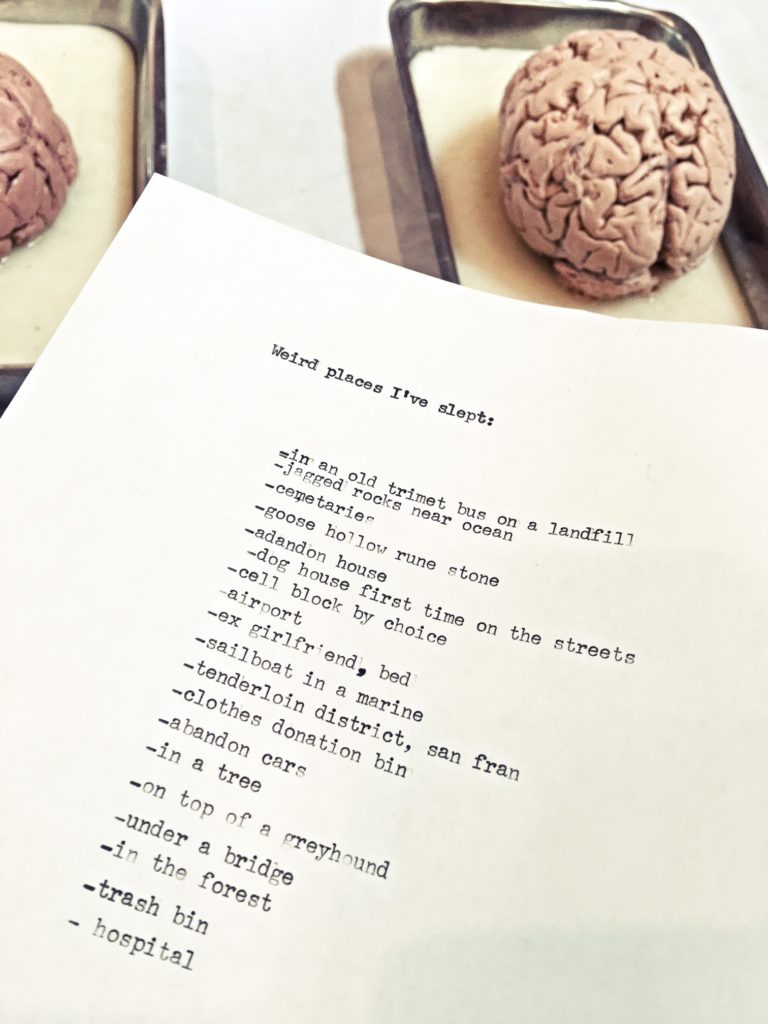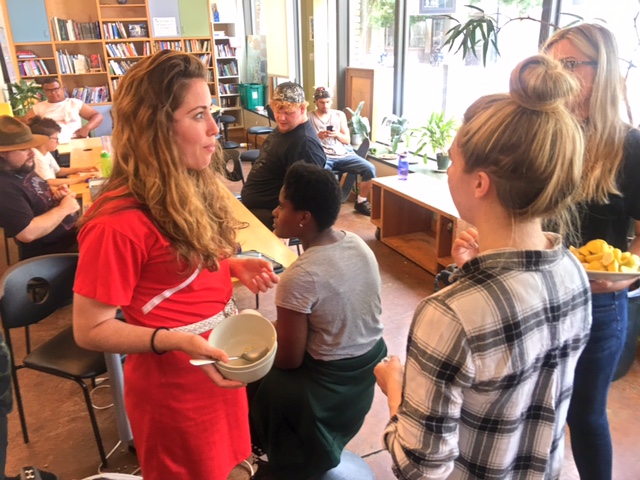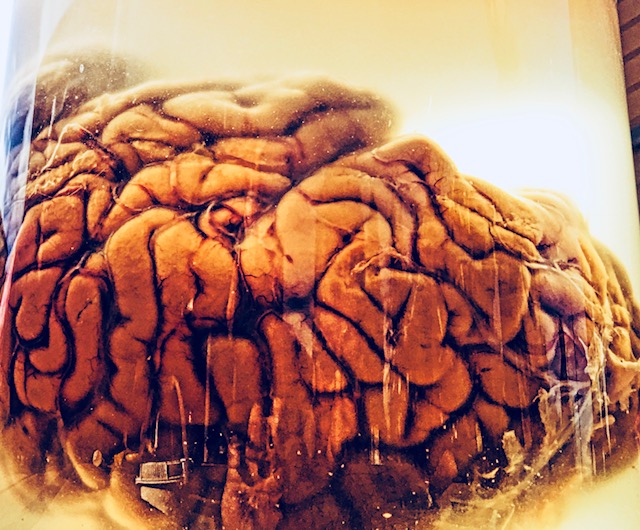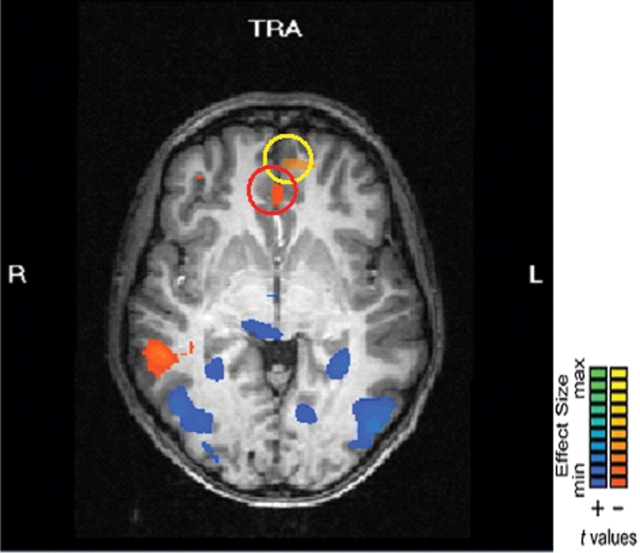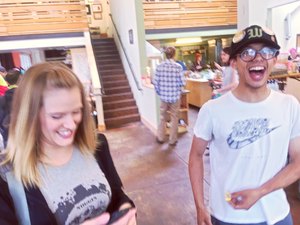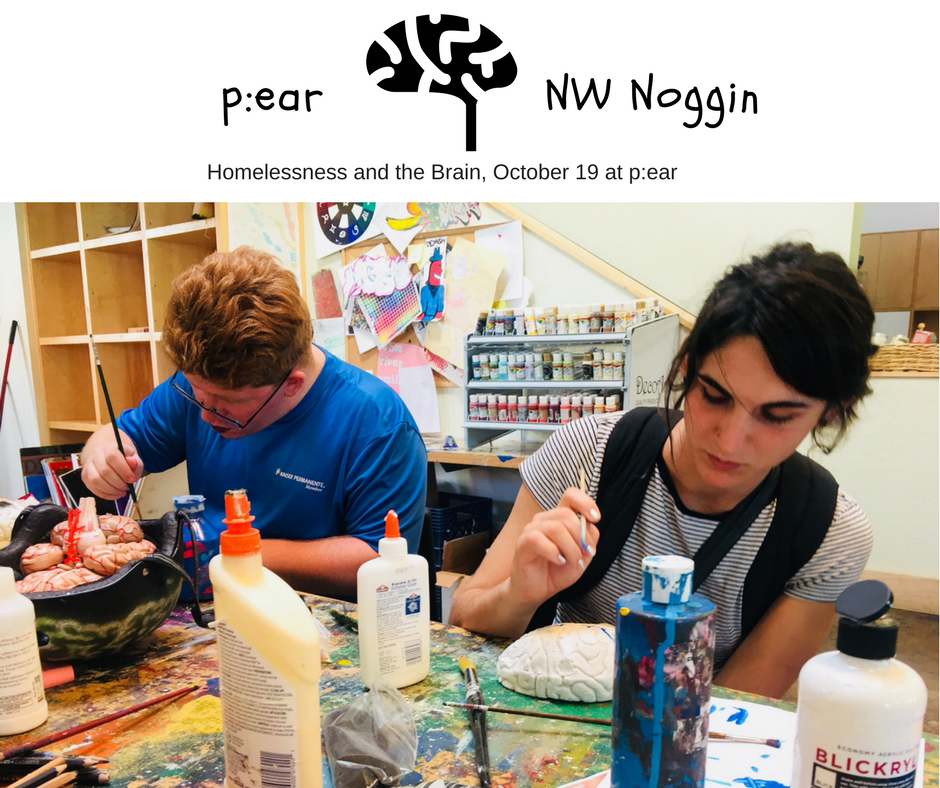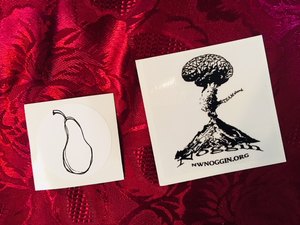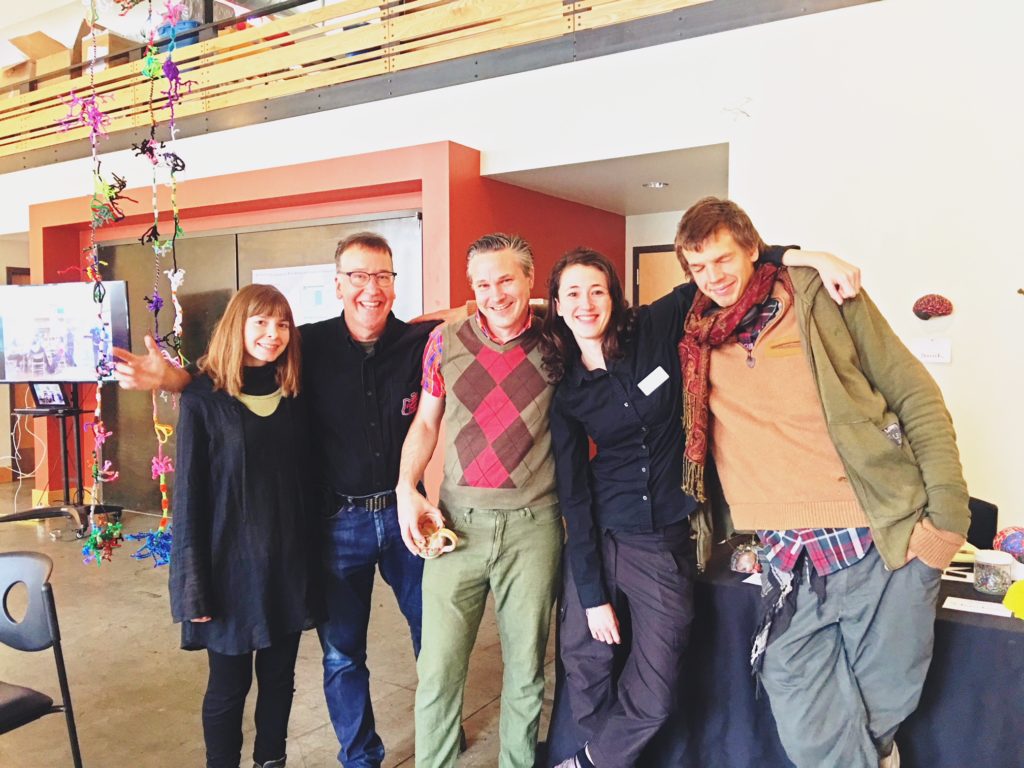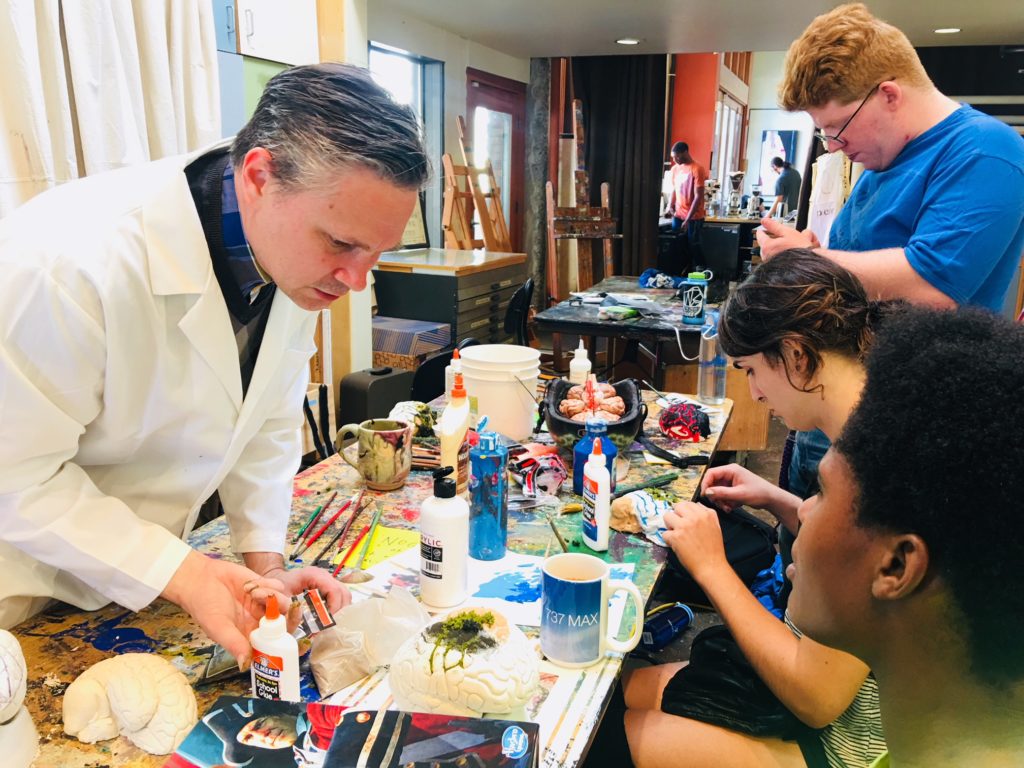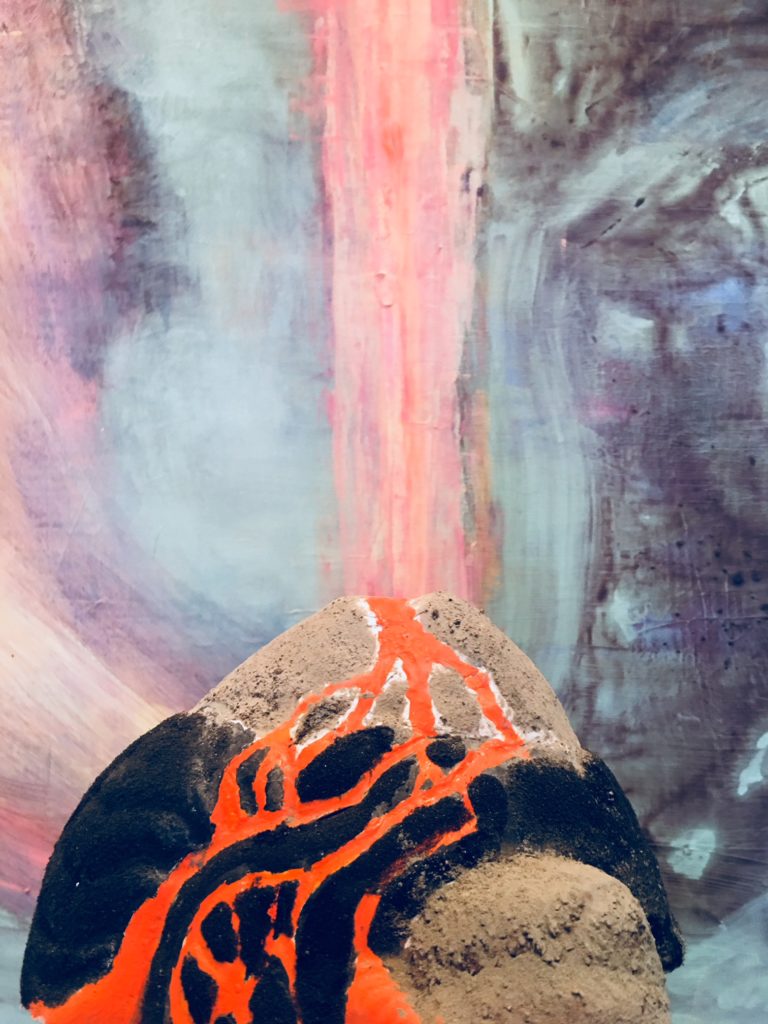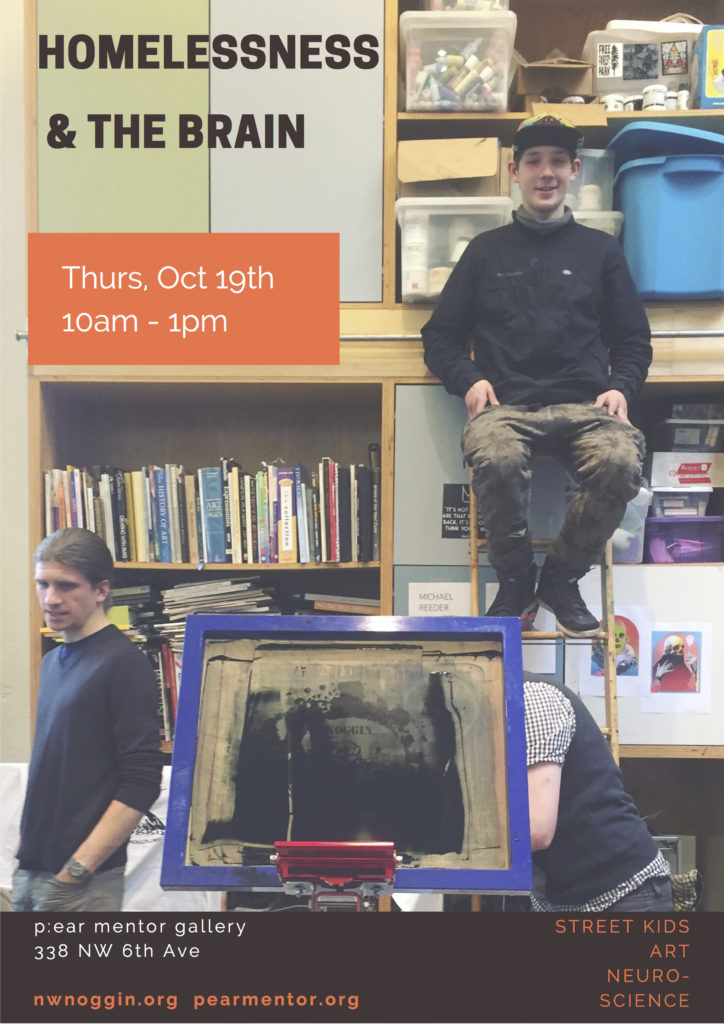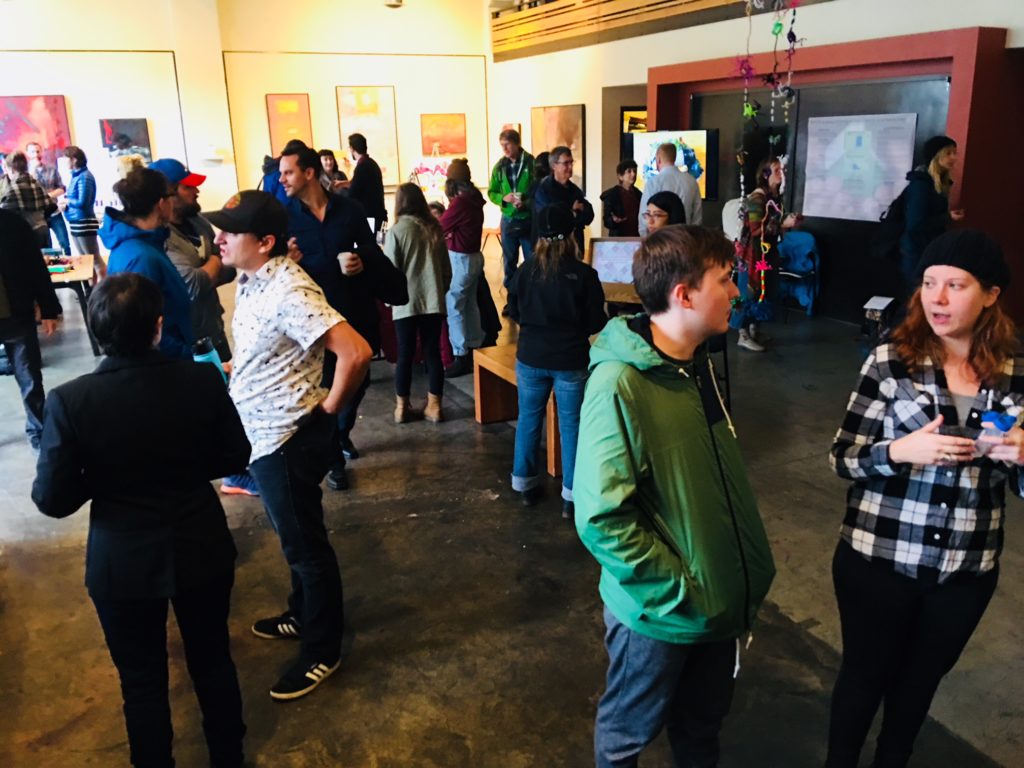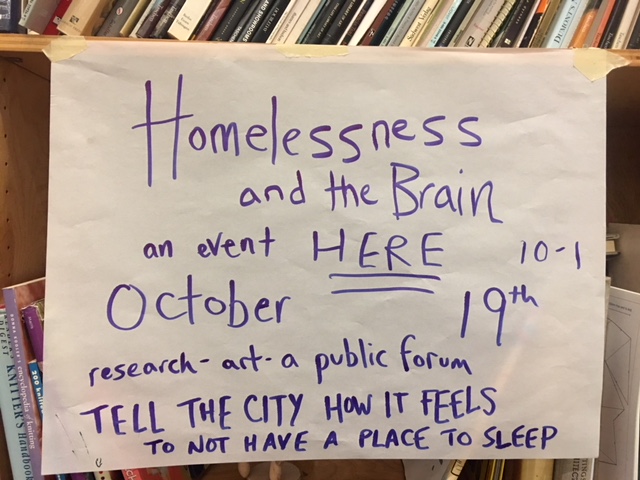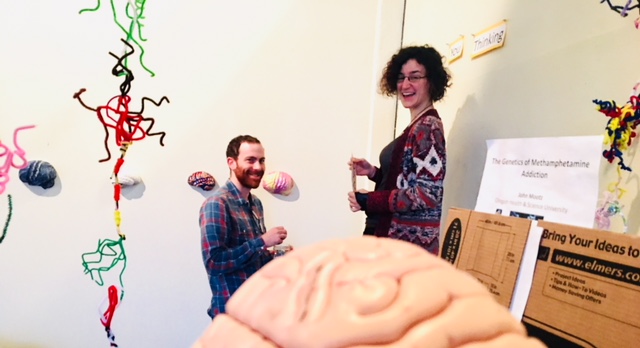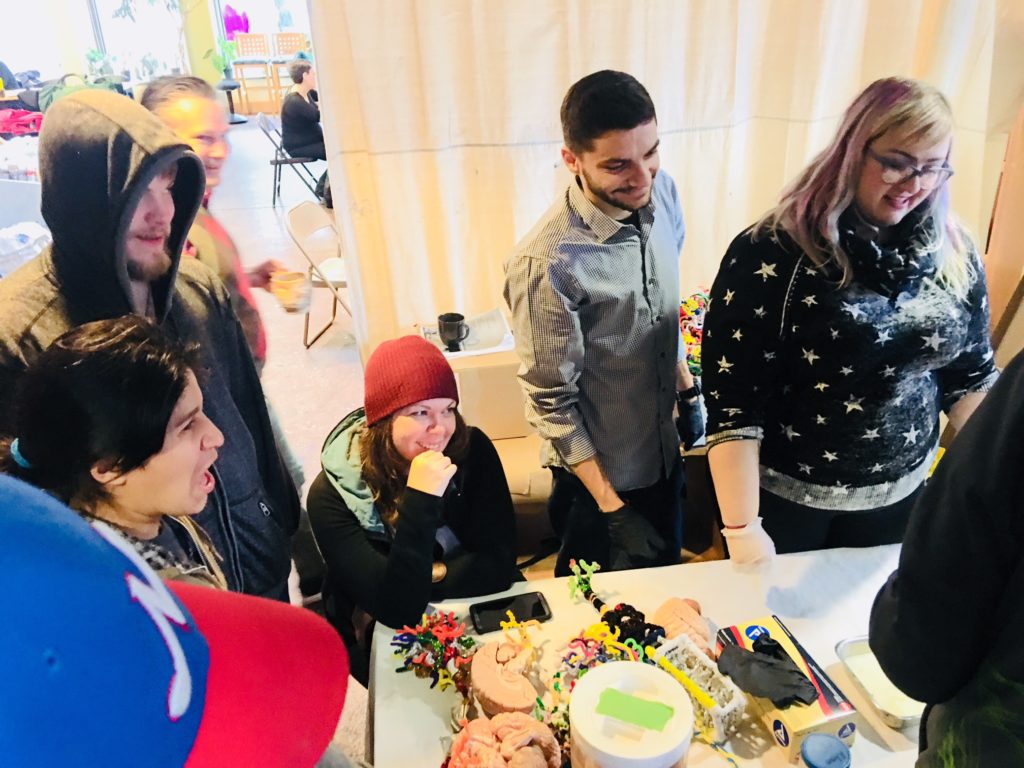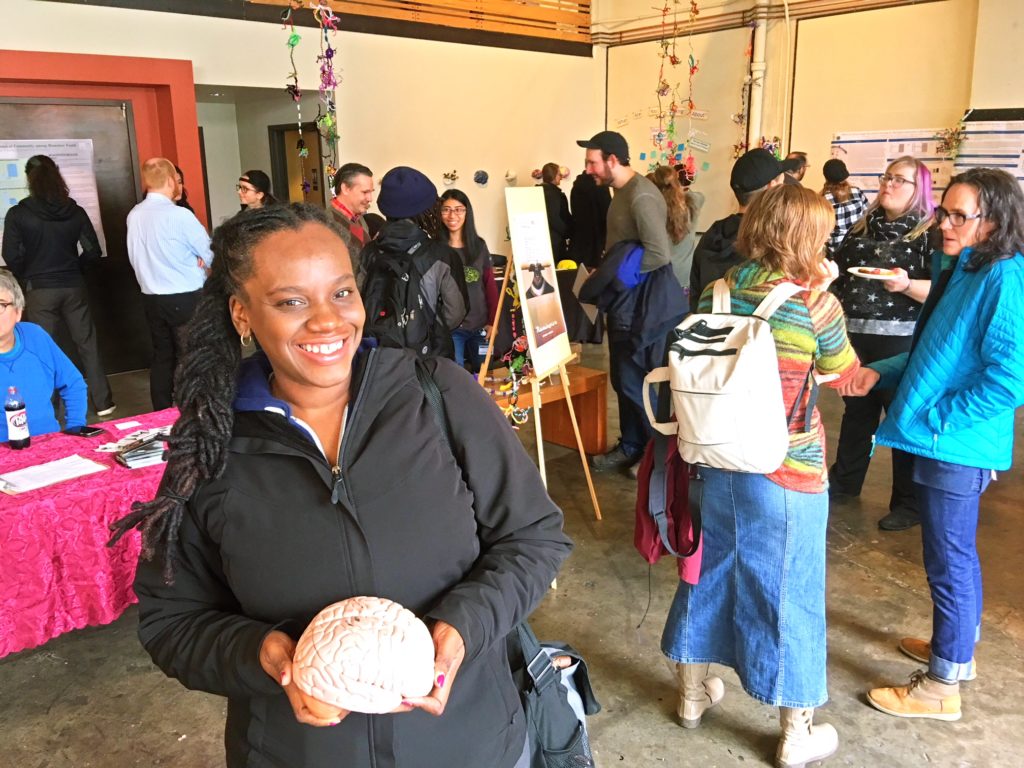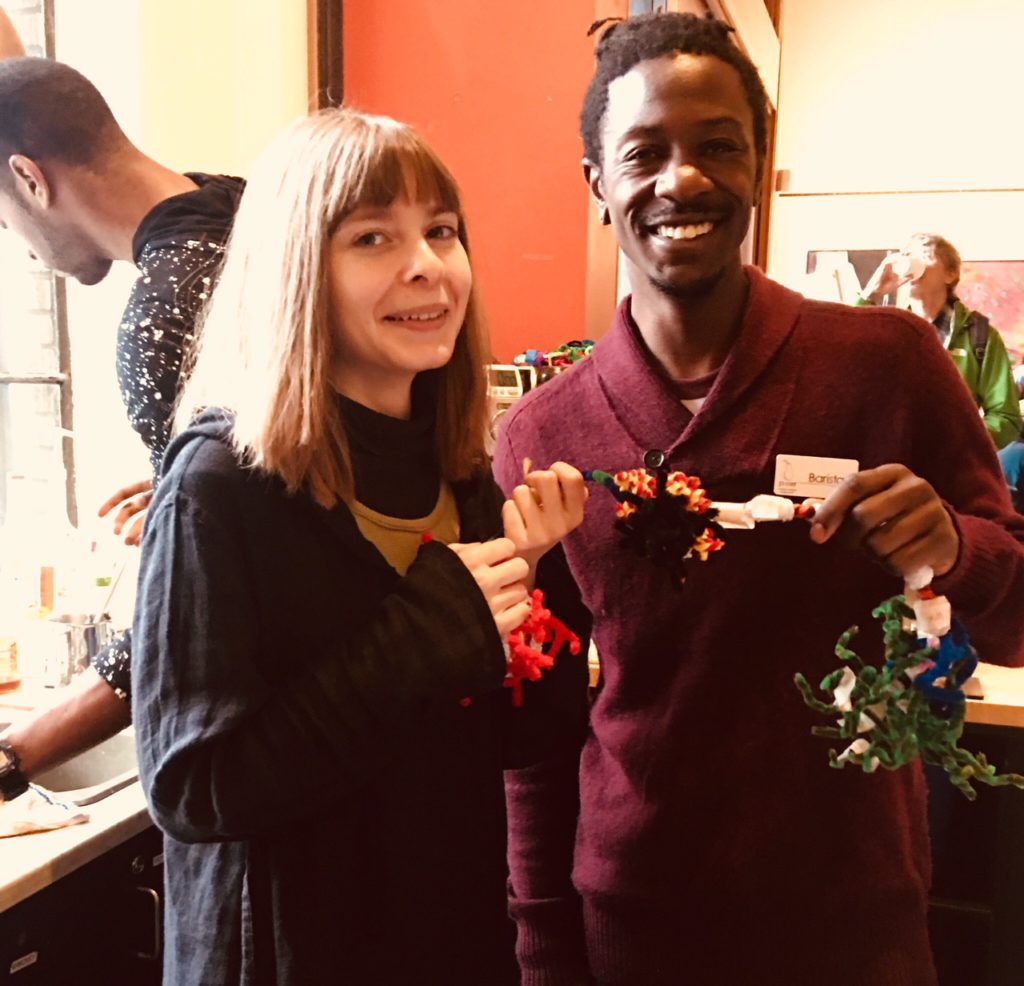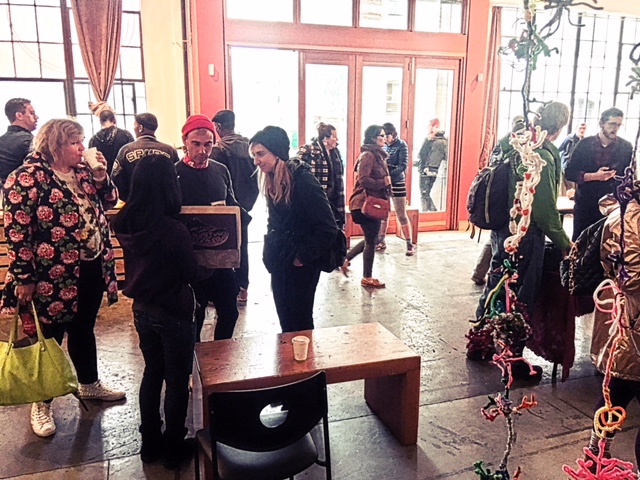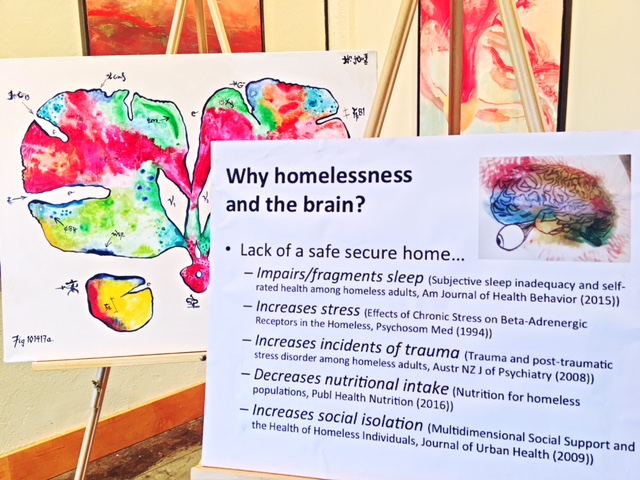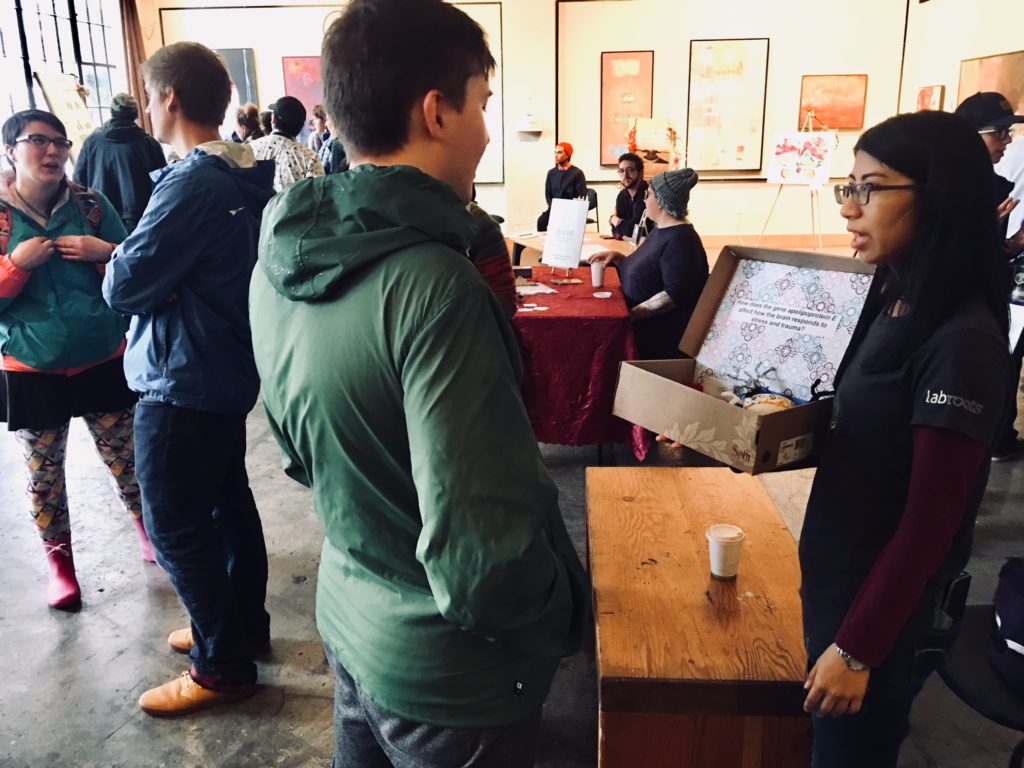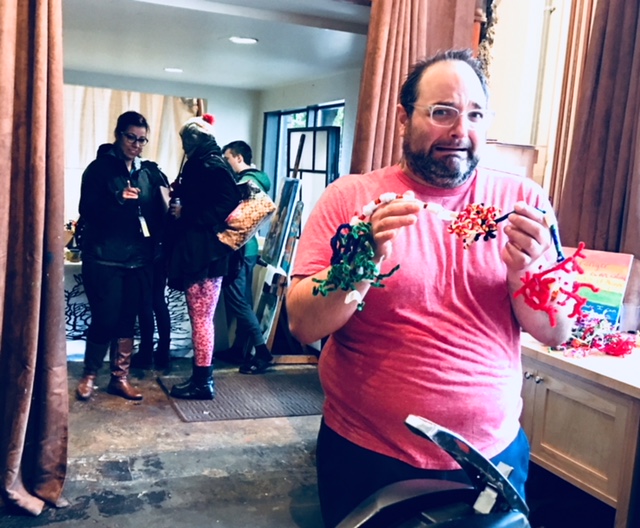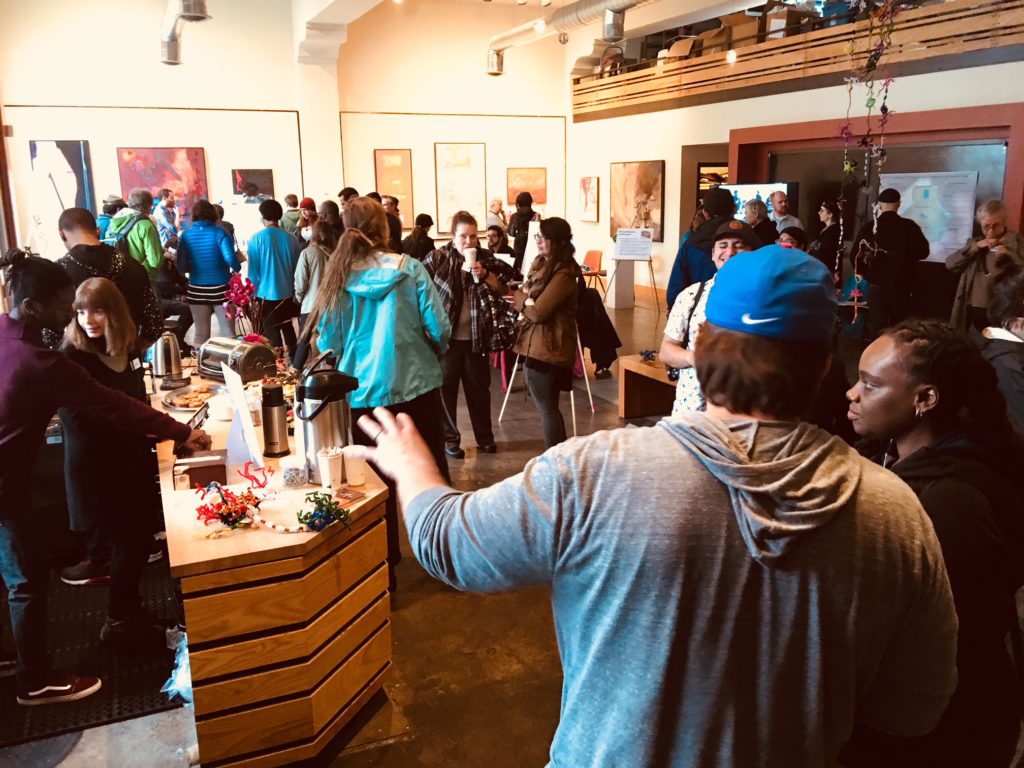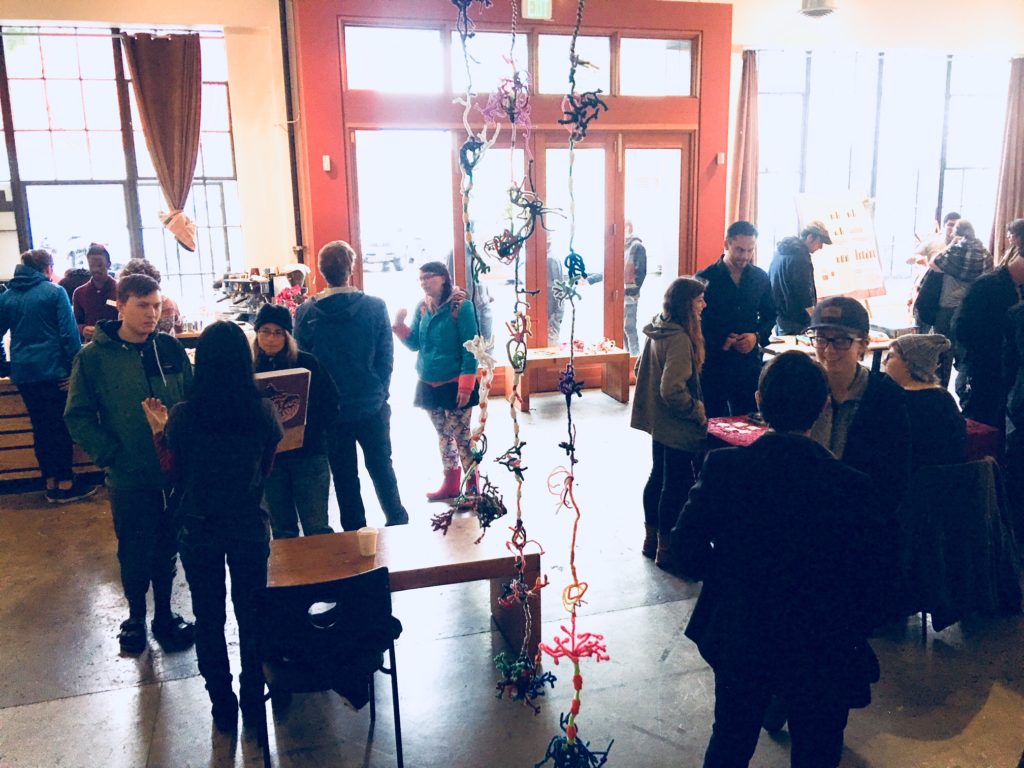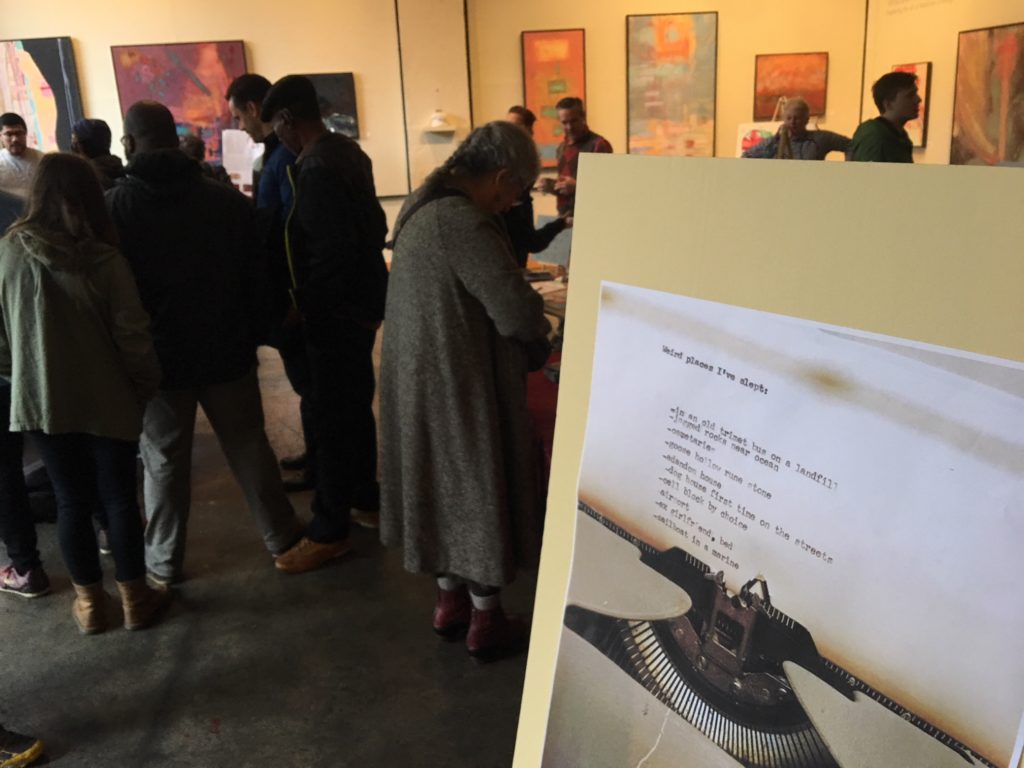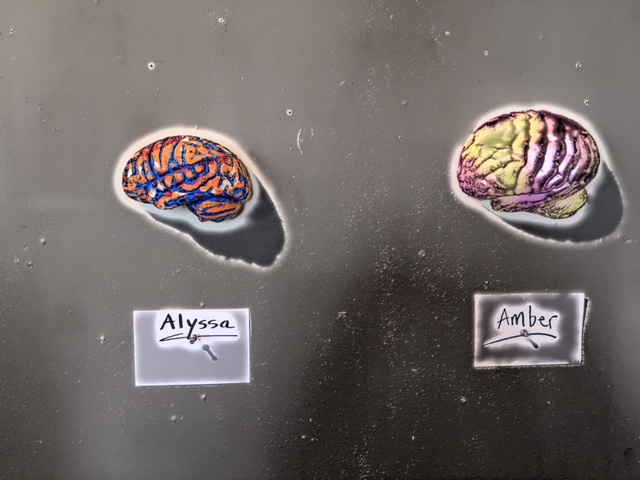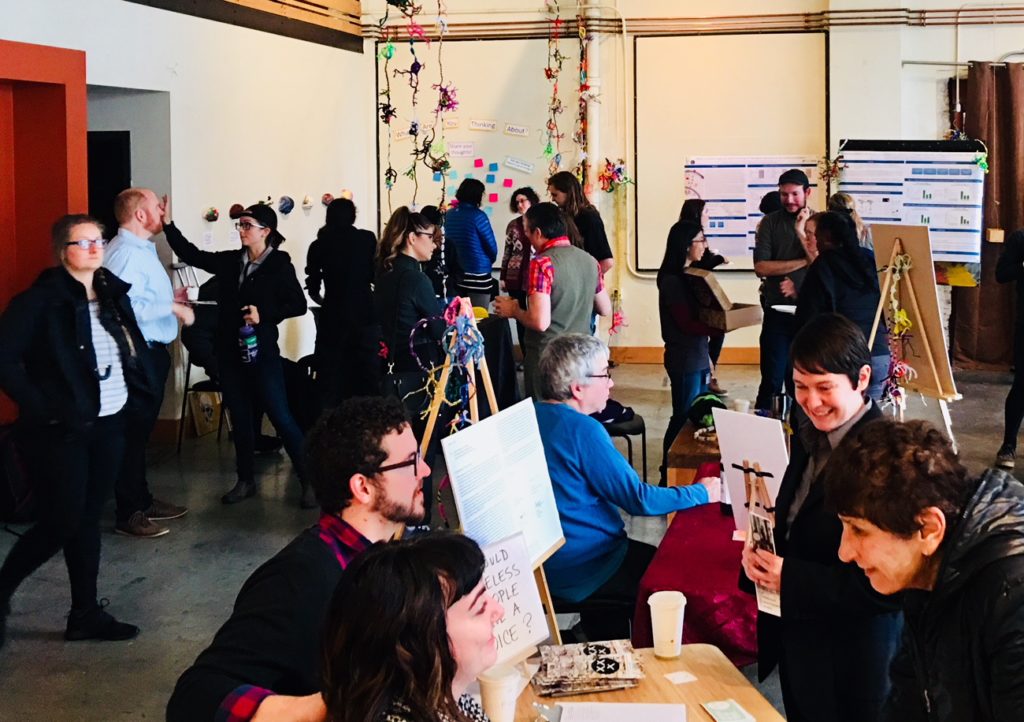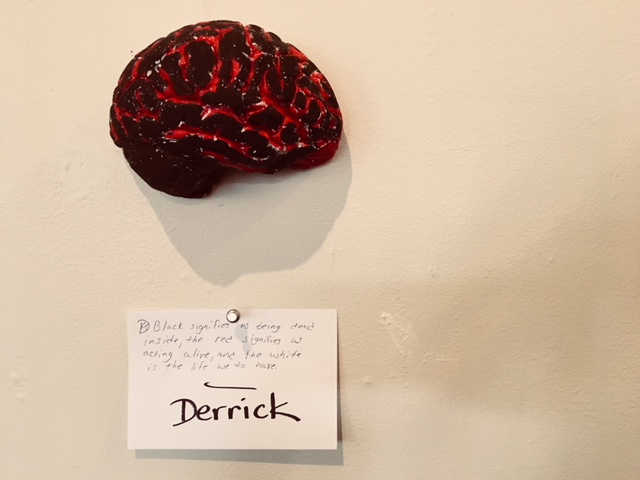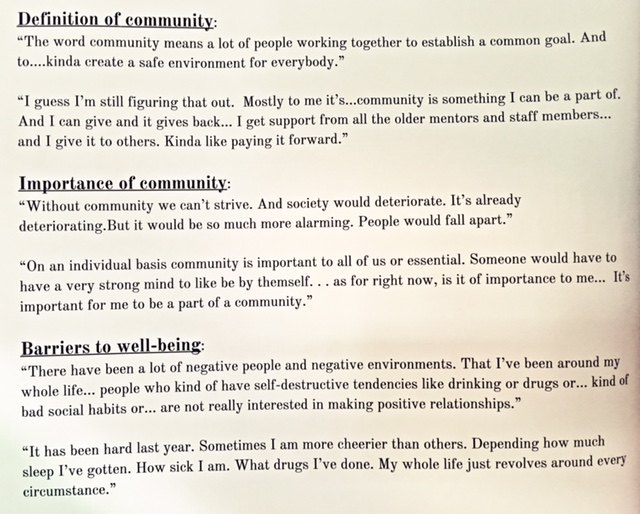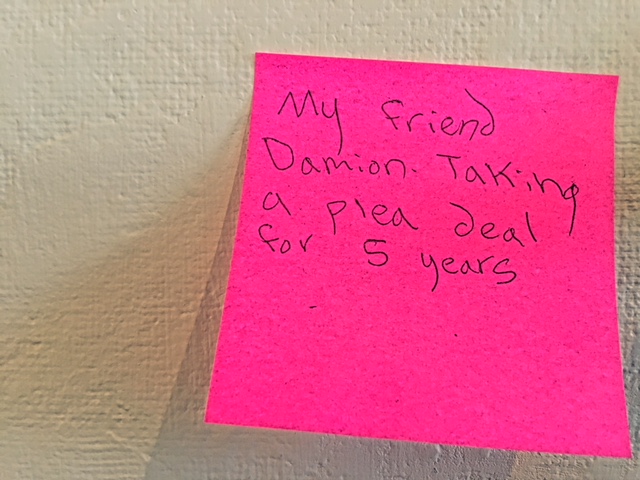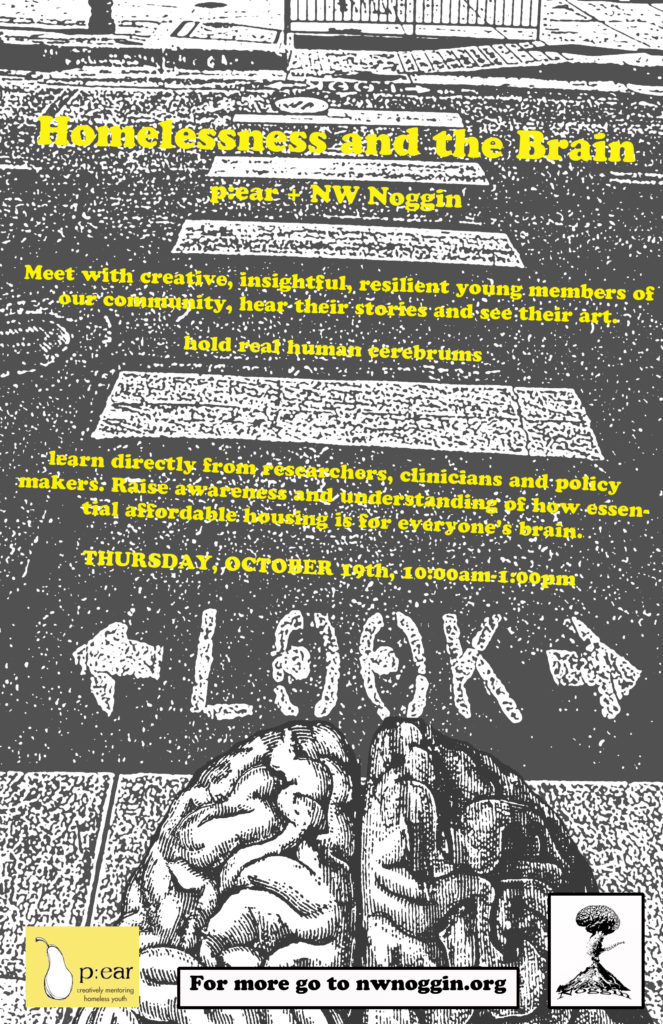“It’s like people see me as an object, not as a human being.”
Noggin loves visiting p:ear, a nonprofit center for homeless youth. P:ear offers community, along with critical services, support, and a welcoming educational and gallery space in Portland’s Old Town neighborhood, filled with caring staff and volunteers for young people – many of whom lack safe places to sleep.
Our graduate and undergraduate volunteers enjoy spending time with these sharp, curious, insightful, strong, resilient and too often sleep-deprived young Portlanders, discussing the brain, screen printing t-shirts, messing up our taste buds, and attaching electrodes to measure our own cortical activity…
LEARN MORE: NW Noggin @ p:ear
We’ve also had intense, poignant, powerful conversations with adolescents struggling to overcome drug dependence, anxiety, depression, abandonment, bias – and a strong sense that many, if not most people pass them by, without care or notice, as if they somehow weren’t valuable human members of our community. As if they – and their potential, their insight, their contributions, their skills – were weirdly meaningless. As if they didn’t matter.
“Hungry people should be fed. It takes some people a long time to figure this out.” –Lemony Snicket, Shouldn’t You Be in School?
Lasana Harris at University College London and Susan Fiske at Princeton found that people respond harshly to those belonging to “extreme outgroups,” including young people without homes, perceiving them as less “warm” and “competent” than others. They “…elicit disgust, an emotion that is not exclusively social, being directed both at people and objects that seem repellant.” In addition, networks in frontal lobe areas (including medial prefrontal cortex), which are essential for social cognition and for responding to others as human beings with relatable hopes, thoughts, dreams and lives – respond less to images of homeless youth.
IMAGE: Greater activity to groups that elicit exclusively social emotions than to groups that elicit non-exclusively social emotions. Yellow circle: Harris & Fiske, 2006, mPFC activation to exclusive social emotion groups compared to fixation. Red circle: Present study mPFC activation to exclusive social emotion groups compared to non-exclusive social emotion groups.
LEARN MORE: Social groups that elicit disgust are differentially processed in mPFC
LEARN MORE: Social neuroscience evidence for dehumanised perception
LEARN MORE: Social cognition and the brain: a meta-analysis
“It’s like people see me as an object, not as a human being.”
These street kids are correct – some respond to them with “dehumanized perception,” as if they aren’t really humans at all. “People spontaneously fail to consider another person’s mind if that person elicits predominantly disgust,” write Lasana and Fiske. This is not only an abject failure of empathy, damaging to those suffering scorn and rejection, but it may have other appalling consequences, contributing to torture, genocide, domestic violence, ethical lapses in research, and political and religious efforts to deny some people their basic civil rights.
LEARN MORE: Dehumanized Perception: A Psychological Means to Facilitate Atrocities, Torture, and Genocide?
Yet Lasana and Fiske also found that by asking their subjects to engage personally with images of the outgroup members – by, for example, asking them if the person presented “liked veggies” – there was increased activation of the medial PFC. So by considering these terrific kids at p:ear as individuals, with their own likes and dislikes, abilities, skills, stories, thoughts and expressed ideas – maybe more of us can truly see them, and help connect.
Along with Sarah Louise Allen, the Education Coordinator at p:ear, we started organizing a collaborative community event involving graduate and undergraduate brain researchers and outreach volunteers, clinicians, policy makers – and, as equal participants, valuable young members of our community who still lack safe, secure places to call home.
Over the summer and early fall, Noggin Art Coordinator Jeff Leake brought plaster brain hemispheres and a host of materials for transforming the cortical surface, and young people at p:ear created landscapes that powerfully convey their personal feelings, significant locations, and other aspects of their lives in our shared community…
LEARN MORE: Lateral Landscapes: Homelessness & the Brain in Research & Art
And we listened. Sleep came up often, as it is especially impacted by homelessness, and poor, fragmented sleep is linked to a host of mental health disorders. A recent study found that most of us sleep poorly during the first night in a new environment, as one brain hemisphere (typically left) remains partially active as a “night watch,” helping monitor and respond to potential threats. Imagine routinely sleeping in different places, in often unsafe locations, intensely and stressfully aware of the need to stay alert.
LEARN MORE: Night Watch in One Brain Hemisphere during Sleep Associated with the First-Night Effect in Humans
“My left hemisphere at night”
On Thursday, October 19th, we draped vibrant networks of pipe cleaner neurons around the gallery at p:ear, put our donated human brains on display next to boxes of gloves for handling, set up neuroscience research posters and outreach projects from Portland State and OHSU, and hung striking brain landscapes crafted by inspiring youth artists…
LEARN MORE: Who presented at Homelessness and the Brain?
We drew a crowd! For three hours at p:ear, people talked, listened and learned from young brain researchers about stress, anxiety, depression, sleep, emotional regulation, racial bias, meth, alcohol, teenage brain development, and resilience – and explored data, art and testimony from exceptional young community members without a home, to illuminate links between a lack of affordable housing and all our brains…
From OHSU graduate student Eileen Torres, who brought an intriguing box of objects representing sources of tension and resilience to explain her work on the genetics of stress:
“It was my first time at p:ear. Really incredible facility with wonderful, caring staff that were dedicated to providing a safe space to learn and build community.”
“The artwork made by the young artists was both delightful and thought-provoking. Feelings of isolation and loss were a couple common themes I saw in the brain landscapes. From conversations with them and their art, it was clear how important a sense of community was. As one individual commented, it wasn’t about going through the same things because everyone’s experiences were different, but it was really important to learn from each other.”
“It was exciting to talk about my work with other researchers and connect with them. Also, figuring out how I could convey my research in a less traditional manner was challenging but immensely fulfilling when I had folks shaking their heads as I explained ideas still being reworked and fleshed out in my own mind.”
A great many Portlanders clearly care about their neighbors, family, friends and other community members on the streets. They are concerned about inequity, housing affordability, and are looking for leadership, and ways to truly see people, learn more, connect, organize and assist.
Please look at the art. Do you like it? What do you see? The artists themselves lack homes, and were asked to depict the landscapes they inhabit, or aspire to inhabit. Many visitors at p:ear felt compelled to consider those who crafted each hemisphere from lived experience – and consider impacts of homelessness on these young brains, and on our own…
“We are all connected.”
Not only are people on the streets affected, but those of us who sleep in our own beds each night also have brains impacted by homelessness, perhaps through less activation of cerebral networks required to fully humanize those in our community in need of our acknowledgement and support…
“Black signifies us being dead inside, the red signifies us acting alive, and the white is the life we do have.” Derrick is incredible.
Sisters of the Road, a nonprofit cafe working to create systemic change to end poverty and homelessness by providing nourishing meals in a safe, dignified space, joined us in the gallery, and along with p:ear wrote a compelling, evidence-backed letter to City and County officials about the ongoing crisis in housing access and affordability…
They requested, based on the research cited above, that public officials remain “wary of arguments that focus on statistics without telling the stories of the people behind them.” They petitioned policy makers to please “speak-up when people bemoan ‘the homelessness problem’ and affirm with us that people who are unhoused or experiencing poverty are not a problem, a blight, or a burden to be measured, passed around and distributed; they are our friends, members of our communities and our neighbors.”
Humanized perception lets more of us be seen, heard, and included.
LEARN MORE: RE Proposed Shelter in Old Town Chinatown
Brittany Alperin, a graduate student in Behavioral Neuroscience at OHSU who presents this week at Velo Cult on anxiety and the brain, asked visitors to focus on what they were thinking, and then write it down on a post it note…
Thank you Sarah Louise, Will Kendall, John Phillips, Beth Burns and Pippa Arend and all the terrific young artists at p:ear for a powerful and valuable event. We look forward to further collaboration and more visits with brains, brain researchers, artists and art…



